By Haas’s own admission they have a problem: Their car is quick over one lap, but then struggles on longer runs.
This has been underlined by their race results so far this year. The team has a perfect record when it comes to getting the VF-19 into Q3, yet has mustered just a single points-scoring finish.Kevin Magnussen was thrilled by his car’s performance in qualifying at Melbourne. But three races in he admitted he “doesn’t really understand” their “frustrating” race pace.
The team’s analysis shows that the problem is with their use of the 2019-specification Pirelli tyres. They are not alone in struggling with the new tyres and related regulations. However Haas’s problem appears to be peculiar to their car, and more to do with the tyre temperatures than its general handling.
“It’s a combination of everything,” said team principal Guenther Steiner in response to a question from RaceFans. “You cannot put it down to [just] vehicle dynamics. It’s aero, it’s everything, brake cooling… there are a lot of things going on we cannot identify because otherwise it would be easy.”
The problem wasn’t apparent during testing, despite the long runs in cold temperatures at the Circuit de Catalunya. This is certainly because the problem is track-related. The home of the Spanish Grand Prix is predominantly made up of medium-to-high speed corners, so that despite the long straight, the tyres were loaded through the turns keeping them up to temperature.
As the season kicked off, the wider mix of circuit types caught Haas out and leave them in a quandary as we approach Baku, a track with long straights and no high speed turns to speak of. Steiner is rightly concerned “I’m not finding excuses, I’m just readying myself for the disappointment,” he said. “I hope we find something before Baku, but it is a race track we cannot get energy into the tyre.”
NB. Race pace calculated as an average over green flag running in each race
F1 tyres in 2019
How Haas can fix the problem is harder to judge than the pinpointing the symptoms, as the root cause could be in one or more of several areas.
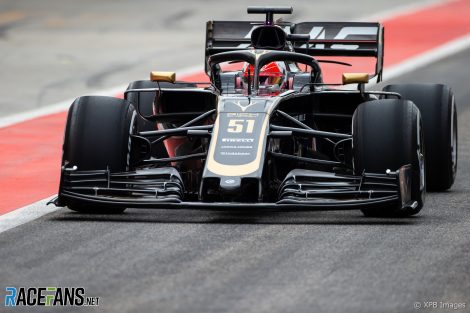
First, all five dry-weather tyre compounds have switched to the thin-gauge rubber used at three events last year. The thinner tread creates less overheating in faster corners, which was leading to blistering last year. This suits the top teams who have the highest cornering speeds, but is a double-edged sword for teams with less cornering load, as the thinner rubber deforms less creating less heat internally and thus runs at lower temperature.
Further complicating the problem, all five tyres in the 2019 family run the same internal construction by regulation. There is little Pirelli can do to tailor each tyre to suit the compound, so warm-up may be compromised. Last in the regulatory changes are the tyre blankets, for 2019 the rear blankets must be set 20C lower than last year. This means that the rear tyres are not at the ideal working temperature when the car leaves the pits.
Advert | Become a RaceFans supporter and
Managing tyre temperature
How a car puts heat into the tyre comes from different areas. Aerodynamics are the first and most obvious source of problems. More downforce creates vertical load through medium and fast turns allowing the car to go faster, the increased lateral load puts more energy into the tyres and this keeps them warm. The flip-side is that if there isn’t the downforce to keep the tyre firmly planted against the track, then the tyre slides also creating heat, but in a negative way that tends to overheat the tyre.
In slower turns it’s more the mechanical grip coming from the suspension geometry and set up. This allied to downforce keeps the tyres in check, again too little grip results in sliding that overheats the tyre.
Another factor is the transfer of heat from the brakes, the brake ducts can be swapped for different versions to alter the level of heat transfer from the carbon brakes into the tyre via the wheel. Being able to tune this to the ideal set up to keep the brake hot enough to work and conduct heat into the tyre is a key part of the car’s set up for the track and conditions.
The root cause of Haas’s problems
Combining this we can conclude that the car in qualifying, as it leaves the pits with pre-heated tyres, gets a warm up lap and with the added power boost from its engine’s ‘party mode’ can use the tyres effectively. The Haas car is clearly fast as the qualifying results show, often qualifying ‘best of the rest’ behind the top three teams.
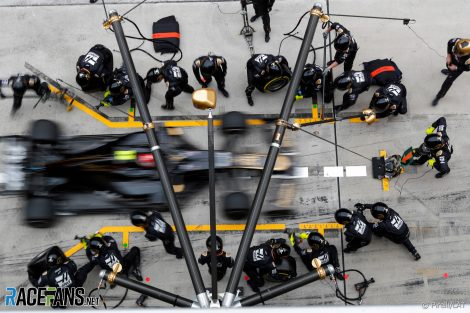
With long straights and a predominance of slow turns the tyres further suffer and lose temperature. Then as the tyre wears the self-heating effect of tread movement makes the whole situation worse. Once the heat is lost there is little you can do to recover the situation. The driver could push harder to put more heat into them, but this is a vicious circle: You can’t go fast from the lack of temperature and the lack of temperature means you can’t go fast. The only option is to switch to fresh tyres with more tread and fresh from the tyre blankets, but this is only possible with extra sets of fresh tyres.
Cars which run fast in qualifying tend to work the tyres well, but then suffer with tyre degradation from overworked tyres in the race, and vice versa for cars that do not qualify well. Haas have the former problem, the car works the tyres in qualifying and under-uses them in the race. So, there isn’t a simple balancing of the set-up to compromise qualifying over race performance.
All teams face the same balancing act, but Haas are struggling with it more than their rivals. They are working to understand the problem, but this takes time, even with the testing days available post-Bahrain. Clearly the tyres are getting warmed for qualifying, the car is then quick, so it has aero and mechanical grip. In the race the car is slower, but the tyres aren’t overheating from sliding, but lose temperature slowly, so again it’s not from a shear lack of grip in fast or slow turns. Ideally, Haas could add a lot more downforce and run with the same loadings as the top three teams, but achieving this is the team’s aim anyway so unlikely to be a quick or easy solution.
Go ad-free for just £1 per month
>> Find out more and sign up
Adding a little more grip from aero or suspension is never a bad thing, but this will not necessarily solve the problem. From race engineers outside of F1, I have been told the stiff set-up on the VF-19 might be a contributing factor. A stiff set-up will bring good qualifying performance, and the driver can stay on top of the trickier car handling for a single lap, but over a race distance this is more of a challenge.
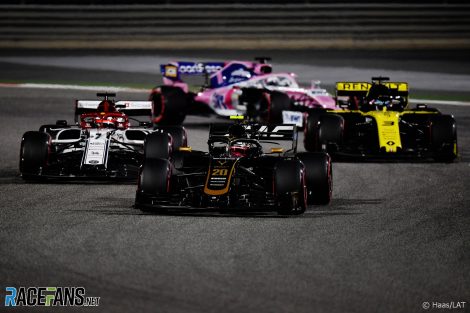
Contrary to inaccurate yet stubbornly persistent accusation, the VF19’s aerodynamics is very much the work of the Haas team, unrelated to its partner Ferrari. So if the car is sensitive to ride height, this is a Haas problem and within their hands to resolve, even if this proves to be a major and longer-term development project and not something for a quick turnaround.
While Haas does run Ferrari’s suspension, that is not to say the team sets it up the same way, so softer springs/dampers can be run to get the set up the team want. If Haas trial a softer set-up, it is their right to do so.
If the answer isn’t simply to add more grip, one direction for the sort of low-energy tracks that the team suffers on could be with the brake blanking. Maybe there needs to be more heat transfer from brake to tyre in the race, even if this causes heat problems in qualifying. Herein lies a problem: Haas buy in the brakes and their ducting from Ferrari, meaning this isn’t a development area the team have been able to work on.
This is one of the problems which the Haas-Ferrari ‘listed part’ approach brings. If the Ferrari-supplied brake cooling options do not meet Haas’s needs, then they are going to face tyre temperature problems. Haas can either start brake duct development of their own or persuade Ferrari to add more options to the ducts they supply. This is possible with their resources, but still not a solution for a turnaround between races.
Advert | Become a RaceFans supporter and
When will Haas fix it?
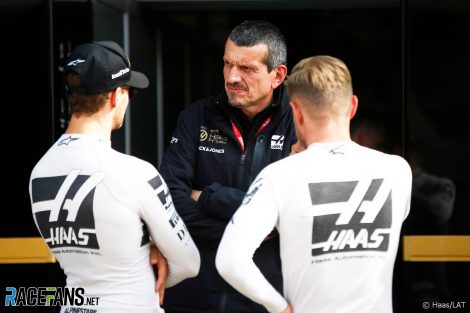
Will this compromise its ability to develop a solution? Steiner stresses: “It’s not the amount, it’s always the quality of the people.
“If you have got the quality and the quantity for sure you’re better. I think we can overcome it, we overcame a lot of things, we just need to work hard on it. After Bahrain we stayed there testing, found what the issues was but after Bahrain we didn’t have any time to actually react to it because the test was finished on Wednesday so we need to see what we can come up now.”
The smaller size of Haas’s operation made it harder for them to deal with the brake problems they suffered with in their first seasons. The team did not develop the braking set-up, so they do not have the level of understanding of it that Ferrari does, they cannot simply ask Ferrari to deal with it and therefore need to raise their level of understanding and resources to deal with it themselves.
Haas have the same problem here. They may not be able to recover anything before this weekend’s Azerbaijan Grand Prix but several of the upcoming tracks after Baku should suit the team far better, giving them some space to resolve the root cause.
Steiner does not believe Barcelona will be an issue for the team. “We didn’t have the problem there in winter and it was pretty cold so why should it come back? I cannot foresee that one.”
This just leaves Baku as a potential short-term stumbling block. Asked how he expects the team will perform at a venue where long straights and short corners may expose their problem again, Steiner said: “I don’t know. I can tell you when we get there.
“We will work hard and try to do the best and get something prepared. But to tell you if we have got something or not I cannot commit. We will just see in Baku.”
F1 technology
- Pictures: Alpine’s new front wing and more Suzuka updates
- Pictures: Red Bull bring first performance upgrade for RB20
- How teams have tweaked their cars to hit higher speeds in Jeddah
- ‘A horrible project’: Why duplicating Red Bull’s trend-setting suspension is so difficult
- Aston Martin, Mercedes, Haas and others describe extensive US GP updates




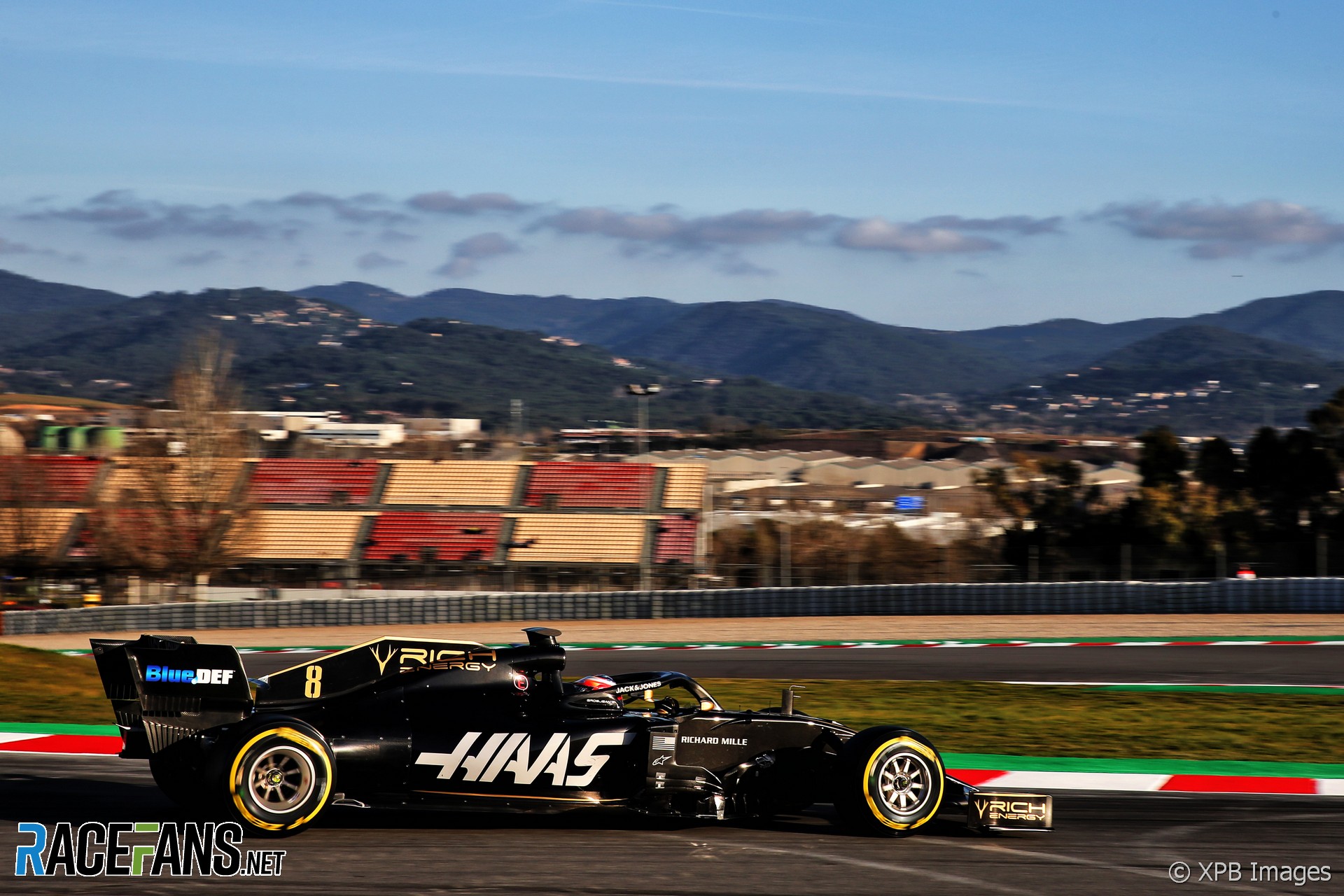
Aleš Norský (@gpfacts)
23rd April 2019, 13:23
Another good one. I like the point emphasizing that the ‘maximum listed part’ approach actually may cause such unexpected complications that are then difficult to resolve precisely due to the team’s minimalist involvement…
BasCB (@bascb)
23rd April 2019, 14:24
I agree @gpfacts, it nicely pinpoints the disadvantages / backside of the coin to the positives of having solidly developed equipment for a good price.
bosyber (@bosyber)
23rd April 2019, 18:43
Yep indeed @gpfacts, @bascb – also, it provides some context to Williams desire to not go that route; I still think they probably need to go more towards this model, but, it is understandable to some extent that they worry about what they might lose in doing so.
robinsonf1 (@)
23rd April 2019, 13:55
Very interesting read! Intriguing to learn a little more about how teams set their cars up, especially for the balance of performance between qualifying and the race.
frood19 (@frood19)
23rd April 2019, 15:19
It’s interesting to me how much of a difference there is between grip-generated heat (good) and sliding-generated heat (bad). presumably there is an element of damage to the tyre when it’s sliding and this has multiple downsides for a racing car – something which I’ve posted here about before is the narrow slip angle of the current breed of tyre. given how pirelli have moved towards a narrower gauge for this year, it’s highly unlikely this is going to rectified any time soon, hence the narrow window of optimal operating conditions for these cars/tyres.
ForzaRogo (@forzarogo)
23rd April 2019, 18:15
yes, Craig is spot on here regarding tyre heat. sliding rapidly heats only the surface of the tyre which causes large amounts of wear and loss of grip, but turning normally with high lateral forces heats up the entire tyre evenly along its length and inside as well, carcass and all. this is what the teams are looking for with warming tyres because having high surface temperature is detrimental to performance, it makes the temperatures inconsistent, so they want the entire tyre heated.
DaveW (@dmw)
23rd April 2019, 17:35
Recall that MB had a similar performance story in 2013-14, and became a bit of a joke for qualifying up front and then falling straight back. But look how they turned out.
Sven (@crammond)
23rd April 2019, 18:54
@dmw
I’d say that lasted from 2011 to 2016 or even 2017, with 2012-2013 being the season where it was most apparent as it meant not only time, but multiple positions, too. In the later seasons, the problem got masked as the “slower” race-pace was still faster than anyone else mostly. And as a further mask, there’s the “party-mode” saga…
Aldoid
24th April 2019, 1:52
I agree. It’s been the problem that’s taken Mercedes the longest to cure. Even last year there was an instance or two where they didn’t quite get the tires into the optimal temperature range. I have a feeling that’s why the car has looked so stiffly sprung this year. It’s probably one of the measures helping keep the tires evenly heated.
elchinero (@elchinero)
23rd April 2019, 17:51
Excellent techno-piece. Thx …
Jimmi Cynic (@jimmi-cynic)
23rd April 2019, 20:37
+1. Thanks, Craig!
Watertower
24th April 2019, 7:01
Indeed, very enjoyable read providing much insight
DB-C90 (@dbradock)
24th April 2019, 0:26
As always a great article.
I don’t think Haas are the only ones having this issue – it seems that every team (including Mercedes) is having trouble finding what seems to be an incredibly narrow sweet spot on this year’s tyres.
Watching out laps and the parade lap at the start of races is ridiculous and frankly starting to get dangerous as cars on out laps in qualy have been caught several times travelling incredibly slowly in front of a car on a hot lap with some very close near misses. It’s only a matter of time.
Seems to me that tyres should not be the single dominating reason as to why a car performs but we’re seeing that horrible factor in a big way this year. And to think in 2021 they’ll change and probably be worse……..
socksolid (@socksolid)
24th April 2019, 5:23
The recent f1 history is full of failed and struggling teas who claimed to be able to do f1 with less because they have some kind of “magical efficiency” that allows them to do so. USF1 was all about doing things differently and it never even got their car built let alone participate in a race. Manor with wirth design was all about cfd and not using wind tunnels. Lotus/caterham also claimed to have access to this magical efficiency but just like lotus they were not just slow but also went bankrupt.
Then you have renault which is also claiming to be efficient. In reality they are spending every penny they have on everything they have surely hoping they’d have a lot more to spend. And haas is now claiming to have this magical efficiency. In reality? They are not red bull, mercedes nor ferrari. They are not even force india which seems to be the bare minimum of efficiency. Obviously haas is not going to go over but just like all other teams in the past that were just rich people’s hobbies and if you don’t get any bang for the buck they are gone just like that. Haas has lucked into buying good ferrari parts that allows them to get good results occasionally.
In the end haas have no magical efficiency. It does not exist and has never existed in f1. F1 is all about getting the biggest scoop and ramming it as deep and hard into your money source as possible and then pouring that money all over your car and engine. Whoever who wins has the deepest bowls of money. And if you can’t win with the biggest bowl of money the fault usually lies with the people who hold the scoop. Haas is now in a situation where its scoop is too small and their need more money to make their car faster. Only way to make their car quicker is to get bigger scoop and pour more money on the car. Efficiency is about using what you have and if you don’t have something you are very efficient in not having it.